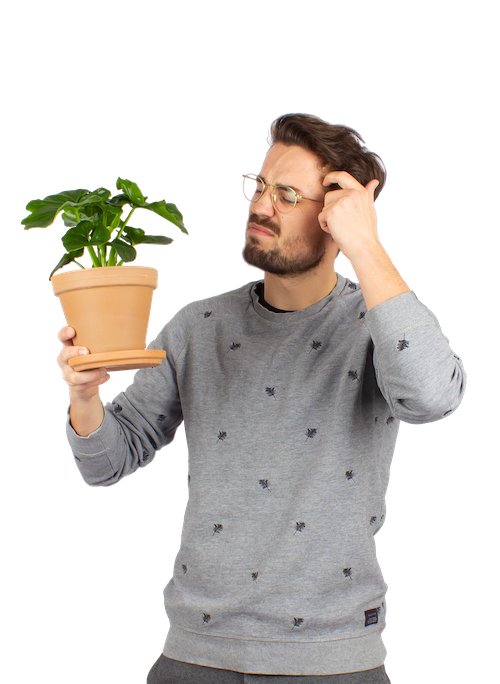Plants got that wintertime sadness? We’re here to help!
We looove decking out our homes in tropical, sun-loving plants, but depending on where you live, you may run into issues for about 6 months of the year. Your plants are saying, “Hey, where’d the sun go?” and we’re in the same boat.
Luckily, many plants will take this as a cue to go dormant until the warm weather and brighter rays come back. If you want your plants to continually grow year round, however, (or just… not die!) we’ve rounded up our top lighting tips for the wintertime!

Placement in your home
Start off strong by placing your sun-loving plants in optimal spots by the window! As the days grow short, this will allow them to soak up as much Vitamin D as possible. Bonus points if you have a south-facing window, as these usually get the most sunlight! You might need to reorganize your space by bringing those corner decorative plants closer as well (sorry, not sorry).
You can also get crafty with any reflective surfaces in your home—think white walls or large mirrors, to cast the most light possible on your plants. Your plant in front of the mirror will thank you. It loves looking at its pretty fronds all day!

Adding artificial lights
Often natural light just won’t do the job in winter. Any succulent-like or a cacti plant will be super thankful for some extra help! That’s where artificial light comes in.
We’d recommend using full spectrum LED grow lights for indoor use, as they are energy efficient and overall the best option for multitudes of plant types.
Types of lights
- Fluorescent Lights: T5 and T8 fluorescent lights are common and cost-effective. T5 lights are more efficient and produce more light than T8s. They are suitable for a range of plants.
- LED Grow Lights: Energy-efficient and available in various spectrums, LEDs provide specific wavelengths of light tailored to different growth stages. They produce less heat and can be placed closer to plants without causing damage.
- High-Intensity Discharge (HID) Lights: HID lights include Metal Halide (MH) and High-Pressure Sodium (HPS) lights. They are powerful but generate more heat and consume more energy compared to LEDs.
Light spectrum
- Blue Spectrum (Cool Light): Promotes vegetative growth, ideal for foliage and leafy plants.
- Red Spectrum (Warm Light): Encourages flowering, fruiting, and overall plant growth. Suitable for flowering plants and those that require more light intensity.
- Full Spectrum: Mimics natural sunlight, providing a balanced combination of blue, red, and other wavelengths suitable for overall plant growth.
General tips
Plant lighting rules of thumb:
- Rotate your plants regularly to ensure all sides receive equal sunlight exposure. You might notice your plant “reaching” towards the sunlight if it hasn’t been rotated enough.
- Indoor plants usually need about 12-16 hours of light per day during winter. You might need to adjust the duration based on the specific needs of your plants. Try to maintain a consistent lighting schedule for your plants (i.e. setting a timer for the same time each day). Sudden changes in lighting can stress them out!
- Watch for signs of stress in your plants. If they're not getting enough light, they might exhibit symptoms like leggy growth, smaller leaves, or discoloration.
There you have it! You're all set to help your plants grow, baby, grow this winter. Have any lingering questions? Reach out to us at hello@plantsome.ca!












